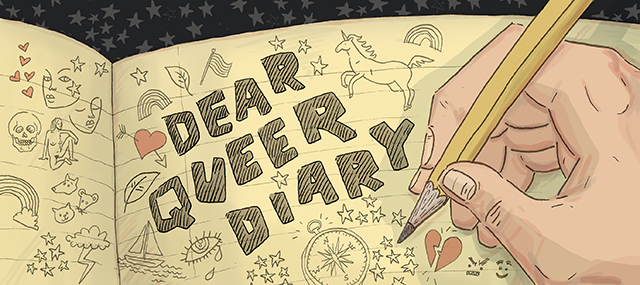
Forgive me, my fearless journalers, for beginning with some If You Give A Mouse A Cookie-style logic:
1. If you are reading this column, I would hazard a guess that you enjoy reading books. (I would also hazard a guess that you are an awesomely intellectual queer nerd with a high level of appreciation sexy glasses-wearing ladies. However, that has little to do with today’s subject.)
2. Now, if you enjoy reading books, I would guess yet again that you occasionally come across a simile, line of dialogue, or factoid that induces you to pull out your favorite set of rainbow highlighters (Plus ten queer points if the first selection that springs to mind was written by Virginia Woolf.).
What I would like to discuss, my dear queer diarists, is what happens after your put the cap back on your neon pink pen and close the cover of Orlando. If you are like me, you may remember the quotation for a few hours before letting it be replaced in your short-term memory by the flavor profile of the chocolate orange whole wheat scone you ate after work or the plot of the sixth episode of the fifth season of The Office. At various future times, it is possible you will recall a snippet of your treasured quotation and go running to your bookshelf to page through Written on the Body in search of those tell-tale highlighter marks. However, it is more likely that you will forget.
Enter the commonplace book, an early modern invention that serves as a diary for the mind—a journal collecting quotations, images, and/or information its owner encountered during the course of her adventures in the world. This creation was known variously as a “hodgepodge book,” a method of organizing information for the purposes of scholarly research, or, in what I consider to be a particularly hilarious turn of phrase, “a salad of many herbs.” (No, not that kind of herbs…I don’t think.)
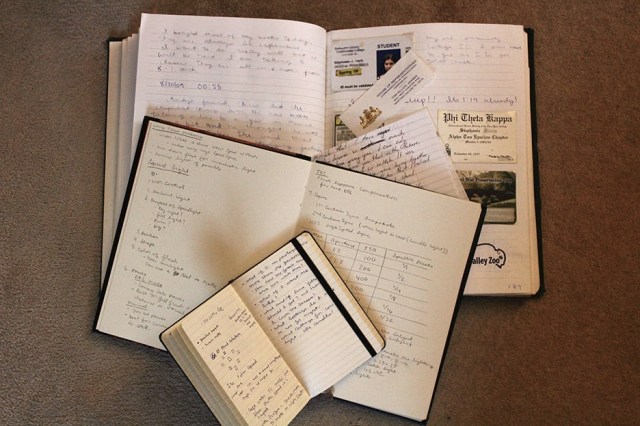
Parsley, sage, rosemary, and thyme… (Via World Turn’d Upside Down)
The purpose of an old-school commonplace book was to collect all those pearls of wisdom you encountered in the course of reading great books, conversing with great wits, and listening to the occasional rousing political speech or inspiring sermon. Today, commonplace books serve a similar function, yet, as in all things, you are more than free to do you. The hypothetical commonplace book of the hypothetical dear queer diarist might collect those nuggets of fun she finds in her reading of graphic novels, her browsing of the internet, and her copious Netflix-watching.
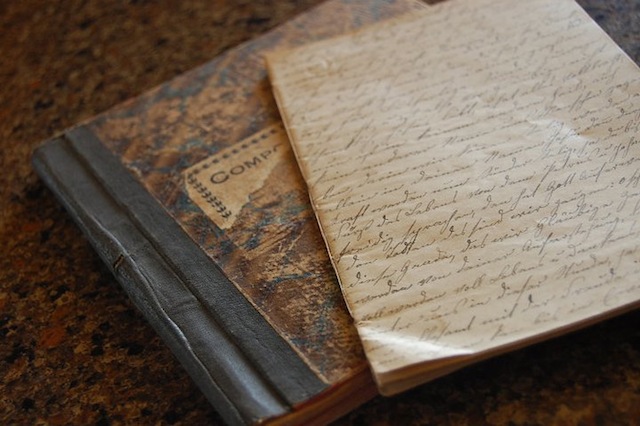
These commonplace books are older than the great Goddess of Netflix herself. (Via Sage Parnassus)
Like Merlin in the Disney classic The Sword and the Stone (one of the most tragically underrated films of modern time), today’s commonplace books take many forms. You certainly might have a leather-bound codex in the style of our early modern forbearers, but some would argue that Pinterest takes the commonplace book online—and others might say their Tumblrs or Evernote accounts serve a similar function.
For those who prefer the pen and paper, you might employ notecards (with what seems like the world’s most sophisticated notecard-filing system), Post-Its, or the good(?) old Moleskine. My approach is to keep notes in about five million different places in about six million different forms, in order to ensure that I can almost never find what I am looking for. I dream of a more organized system of commonplace book-ing, but for now, I shall revel in the chaos of recipes in one place, links in another, and quotations from my reading life scattered here, there, and everywhere.
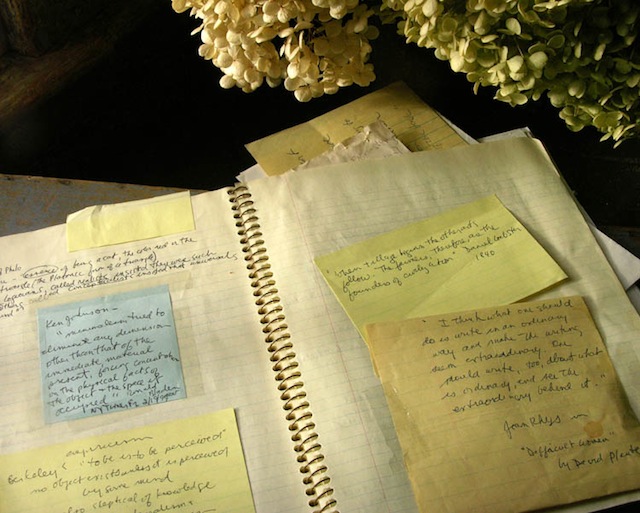
For best results, keep a tasteful bouquet of flowers near your commonplace book at all times.
(Via Studio and Garden)
In short, my dear queer diarists, commonplace books are like common sense: not as common as they ought to be. Do you keep one? Do you have aspirations of keeping one? Have you ever enjoyed a literal salad of many herbs and was it as delicious as it sounds?
Dear Queer Diary is a column about the joys (and occasionally, the pains) of journaling. We crack open our tiny notebooks and break out the rainbow-colored pens on the regular, so get ready to limber up your writing hands and document all your beautiful feelings!
Header by Rory Midhani
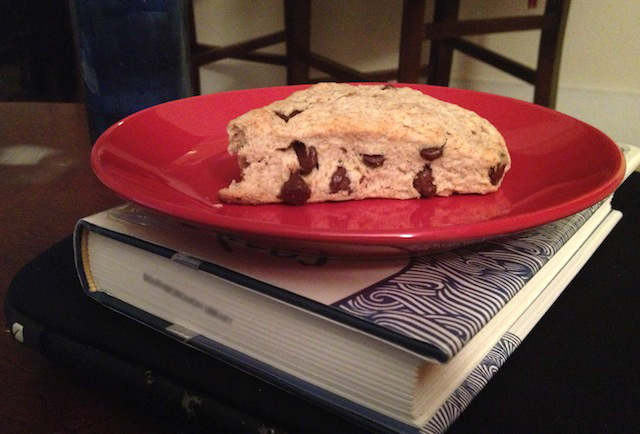
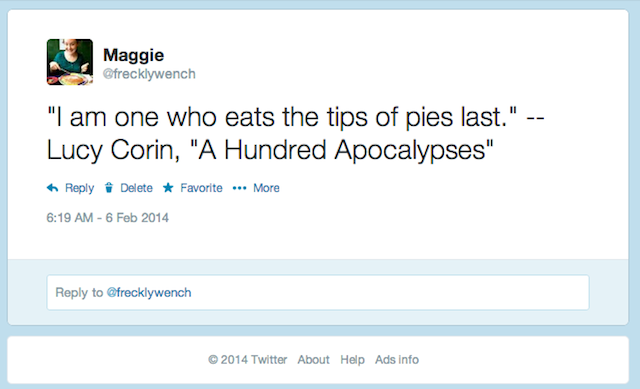

omg. why am I not already doing this?
Never could keep a diary, but I’ve been filling up notebooks this way since high school. They are my pride and joy. I didn’t know there was actually a name for it!
One thing— for me, the notebook has to be ugly. If it’s too pretty (e.g. leather-bound or well-designed stationary) I’ll always be too hesitant to write something stupid or out-of-order in it.
Ugly notebooks = no fear.
I can relate to the fear associated with pretty notebooks! I have one notebook that I have been saving since 2006 in the hope that my thoughts will someday live up to its glory.
It’s the same for me. My notebooks are all ugly and cheap. (I buy them at the $1 store.)
I didn’t know there was such a thing as this, & it'[s funny you mention Tumblr being used as one, since it’s what i started out thinking my Tumblr would be for. I think in a way i keep one, but it’s my sketchbook. Like, i just put everything into my sketchbooks, including weird work exchanges (like when my manager thought i said i drop acid & the cow on the math book), to-do lists, lists of things i need, & quotes & things.
And back in….. ’04-’05? I was taking two Telemedia (huehue) classes at once, & our teacher wanted us to keep an “observational journal” where we would do stuff like write down things we found interesting, stories, quotes, overheard stuff… which i still do in my sketchbooks.
Also i really like things like the second & last pictures because i like seeing peoples’ books insides /vibrates excitedly
This is so crazy! I started doing this last fall and was inspired by the early-modern commonplace books I’d come across in my research. I write my favorite lines of prose & poetry in my Moleskin and also keep a note of where I found it from, in case I want to revisit it in full again.
I used to keep my journals in big 5-subject notebooks, but this year I’ve switched to pocket-sized journals. I haven’t yet gotten to the point of always carrying mine around in my back pocket, although I’d like to. At least it’s easy to thrown in my bag so I can jot something down whenever I want to. The small pages also make me feel less uncomfortable with noting down just a sentence or two. A too-fancy notebook or a too-large notebook seem to demand a profundity I can’t always muster!
In theory my sketchbook/reflective journal is like a uni version of this. So it’s totally subject specific to art & queer theory. Post post grad I’d definitely keep a lovely things I like/find inspiring book. I think it’s a nice place to move that habitual noting and annotating to. Definite aspirations towards a non education based this. Until then I have pinterest.
WELL, in my research for this column, I discovered that commonplace books *were* an old-school note-taking strategies they taught the Young Men at Oxford and Cambridge. “Tradition, tradition!” (in the immortal words of Fiddler on the Roof)
This is awesome to know. :) I now feel like I’m achieving my aspirations already.
I have a ‘notable quotable kid’ book that’s super empty but tumblrs, and notes on my phone, and post-its full of hilarious things my child has said. The idea is that one day I’ll compile all the things and write them in this actual book, but I never do. The Sword in the Stone is the best. I always wished someone would turn me into a bird or a fish, but not a squirrel because that looked stressful.
Advantage to being a squirrel: sexy lady-squirrel falls in love with you!
Right, but that squirrel was really ignoring his lack of consent, you know? And then she’s all heart broken when he turns back into a boy and that’s a lot of guilt that I don’t need.
TRUE. Also, the fish song was much more pleasant anyway.
When I was in high school I had a chaotic system of post-its above my desk and a shoebox full of loose papers. The shoe box still lives in my parents’ house collecting dust.
I think I do this but in a crazier fashion. So instead of having one big book filled with mystery things, I have a bunch of books filled with specific things. So I have one beat up old sketchbook in my book bag for random notes/ideas, one moleskin in my purse for grocery lists and stuff I see when I’m out and about, two by my bed- one for poetry because I write it when I can’t sleep, and another as a thought journal when I’m trying to wrestle with a problem. Then I have a wee little red water-colour journal, and another wee little blue book for ideas relating to the dream farm I’m trying to make a reality…. Come on! Jump on the crazy train!!

“My approach is to keep notes in about five million different places in about six million different forms, in order to ensure that I can almost never find what I am looking for.”
This is pretty much how I do things also. Sometimes I’ll write a quote in my journal and elaborate on it, sometimes I’ll stick a link or a picture or a quote into one of many such folders in my computer, sometimes I’ll reblog on tumblr… I guess it partly depends on the topic and partly on where I found it.
I leave my snail-trail of thoughts in a lot of different places. I have blog where I give a lot of writing advice and general commentary, but I also use Twitter/Tumblr.
For private thoughts like book outlines, doodles, maps, and other odds and ends I have journals and sketchbooks, which I always seem to be in short supply of lol
Every time I try to start something like this, I abandon it rather quickly. It’s unfortunate. However, I do write quotes from books I’m reading in a small Moleskine notebook, and that works quite nicely. I try to keep the little notebook with whatever I’m reading, so it’s always on hand and I can record quotes as I go.
This is an excellent idea! I’ve been trying to use Pinterest for the digital version of this, but I’m excited to add an element of it to my journal.
I started journaling seriously at the start of college, and mine are a lot like this now that those adolescent strifes have fallen to the wayside, haha. I have dedicated notebooks for seminars and papers, but often my brain starts whirring when all I’ve got is my journal. So it’s notes about obscure philosophy on top of my grocery list and the list of emails I need to send and call numbers and the address of a concert. I like it, but I wish I had a little more time these days to simmer down and reflect on my day in a narrative.
I did this is in high school and college, now I don’t have any sort of specific system and things are just kinda kept all over the place
I have a rotation of 5 active notebooks right now and probably 6 of them can be categorized as commonplace
As soon as I learned about commonplace books I immediately started one. Mine’s a .txt file, because I have a hard time actually making myself use pen and paper, but I keep quotes, interesting words, etc, and it’s all searchable. It’s such a good idea, and unlike my journals, I regularly go back and reacquaint myself with its contents.
Also both parts of assumption #1 are definitely true.
This reminds me of the Quagmire triplets from A Series of Unfortunate Events. Each of the triplets carries a notebook everywhere, each for their own purposes, which, ofc, they are always able to refer to when they are in a bind, and THEY ALWAYS had some useful info scrawled in there somewhere.
I tried keeping a diary a few times but I’ve always abandoned it soon after. I love keeping notebooks however. Mostly they’re filled with books or movies quotes, lyrics, random thoughts that seem worth remembering.
I have just completely filled my second notebook, so now I have to start a new one.. if I manage to overcome the initial fear of ruining it. Beginning is hardddd
I don’t have a specifically designated commonplace book, but I wind up putting a lot of quotations and such in my journal. I’ve definitely gone through periods where it was mostly a collection of song lyrics and random ideas from books, with some commentary interspersed.
I regularly have like 5 commonplace books running for different subjects (writing, photography, etc) but I’d love to consolidate. And by that I mean I want to buy a pretty new journal!!! (as per usual)
A commonplace book is kind of what I always wanted my journal to be
like the first one I had was this Big Black Watercolour Book that was too intimidating to put anything in other than Art (so that got ditched obviously)
then I had this Medium Black Somewhat-Heavy-Paper Book and that had like a good mix of art and writing but not enough commonplace
And now I have this Little Black Checked Pages Book (clearly size is important here) and that would be totally eprfect to commonplace with if I ever took it out of the house but it -does- open with a drunk quote written down while drunk from one of my friends who wasn’t drunk, whose name I spelt wrong. Which I wrote at the back of the book, and upside down. This separated it from the Big Black Watercolour Book in a lot of ways.
This comment is a little cold-meds induced I do apologise for the all of it really.
Thank You very much. Maybe you would like this article on creating digital commonplace texts with online tools.
“Tools for Constructing Digital Commonplace Texts
There are three basic types of tools for constructing digital commonplace texts: social
bookmarking tools such as Diigo or delicious, tools for annotating images or video such as
VoiceThread or YouTube Annotations, and collaborative writing tools such as wikis, Google
Docs, or online writing sites.”
https://www.okhighered.org/otc/resources/beach-digital-commonplace-texts.pdf